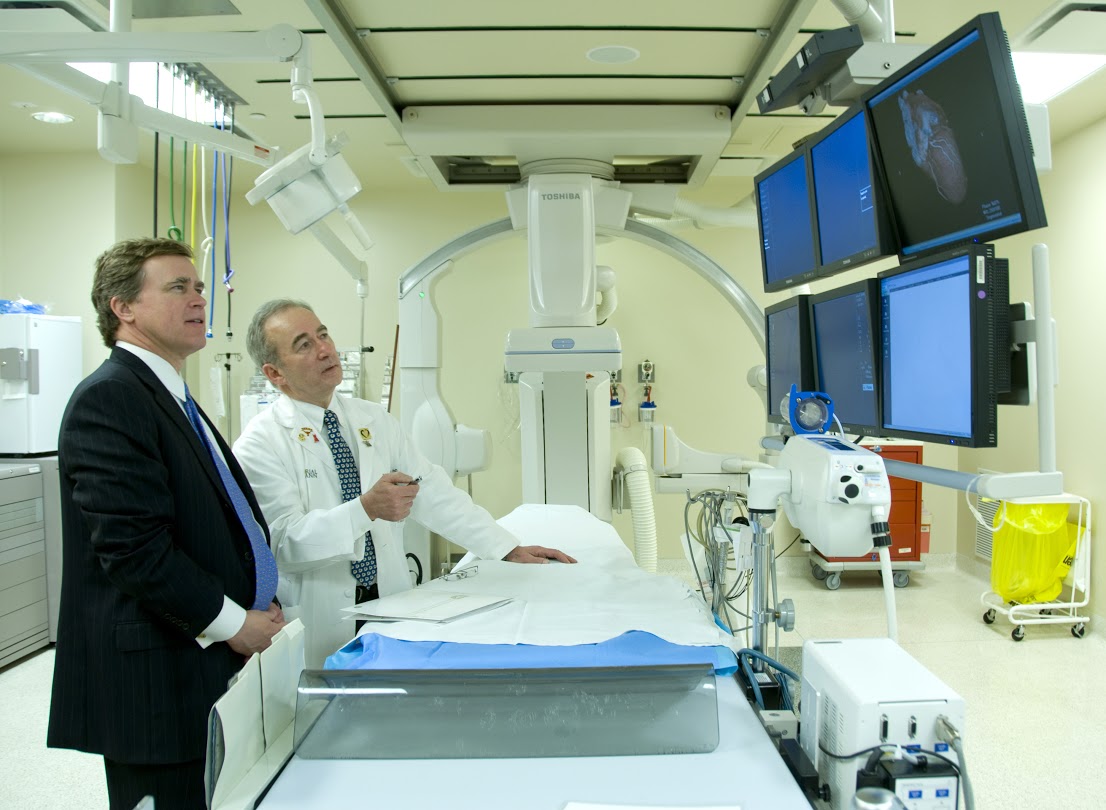Translational
Stewart Cardiovascular Imaging and Therapeutic Innovation Laboratory
The Stewart lab was established in June 2011 to house the research activities of Richard Smalling, MD, PhD, professor and James D. Woods Distinguished Chair in Cardiovascular Medicine.
The Lab is a core facility for the development and testing of new diagnostic or therapeutic technologies in cardiovascular medicine. The Center’s focuses include early-stage concepts for new cardiovascular technologies, providing a clearinghouse where these ideas can be refined and tested in preclinical models and clinical studies.
It is a state-of-the-art animal imaging facility available to investigators at The Texas Medical Center and other academic and commercial institutions. This facility includes high resolution imaging equipment, personnel trained in the operation of each imaging modality and animal handling procedures, and analytical software support for quantitative image analysis. In addition to providing interim animal housing for serial imaging studies, the Stewart Lab also offers an on-site suite for surgical procedures, and animal care provided by McGovern Medical School Laboratory Animal Care Facility.
Laboratory of Dr. Michael W. Bungo
Dr. Bungo is the Principal Investigator for a National Aeronautics and Space Administration (NASA) project to investigate cardiovascular changes occurring as a result of long duration spaceflight.
The focus of this work is to evaluate the astronaut’s cardiovascular performance before, during, and after flights on the International Space Station.
Dr. Bungo has had a long-term standing relationship with the Space Agency since 1980, including a decade directing the human research program onsite at the Johnson Space Center.
HEARTS Study (Houston Early Age Risk Testing & Screening)
This program is one of the first of its kind in the country to diagnose cardiovascular problems in children prior to high intensity athletic activities.
HEARTS study aims include:
- To develop an efficient & economical program whereby sixth grade students receive a 15-minute cardiovascular screening to include:
- Questionnaire
- Cardiovascular physical exam
- EKG or Electrocardiogram (electrical tracing of the heart)
- Echocardiogram (cardiac ultrasound)
- To determine the accuracy of this screening in detecting heart problems in children.
The Weatherhead PET Imaging Center
The Weatherhead PET Imaging Center is a unique State of the Art Imaging Center dedicated to the Prevention and Reversal of Heart Disease by combining the most advanced scientific technology and principles with individualized personal care.
The center is run by Dr. K. Lance Gould, M.D., an award winning cardiologist with over 26 years of continuous competitive research grant funding from the National Institutes of Health, the American Heart Association and/or the Veterans Administration Career Development program.
Currently, the center has 18 ongoing projects involving:
- Imaging technology
- Human coronary physiology and its clinical application
- Invasive flow guided coronary stenting
One of the largest studies at the Center is looking at coronary flow techniques and clinical arterial evaluation for routine clinical PET of quantitative myocardial perfusion and coronary flow reserve in a large population of normal volunteers and patients with CAD (2000 cases) for non-invasively guiding revascularization procedures to reduce coronary events. The study findings led to a novel methodology demonstrating absolute rest and stress flow, CFR, and myocardial scarring. These flow thresholds were integrated into a “simple”, single, integrated, comprehensive quantitative, analytical map of coronary flow capacity for each patient imaged.
